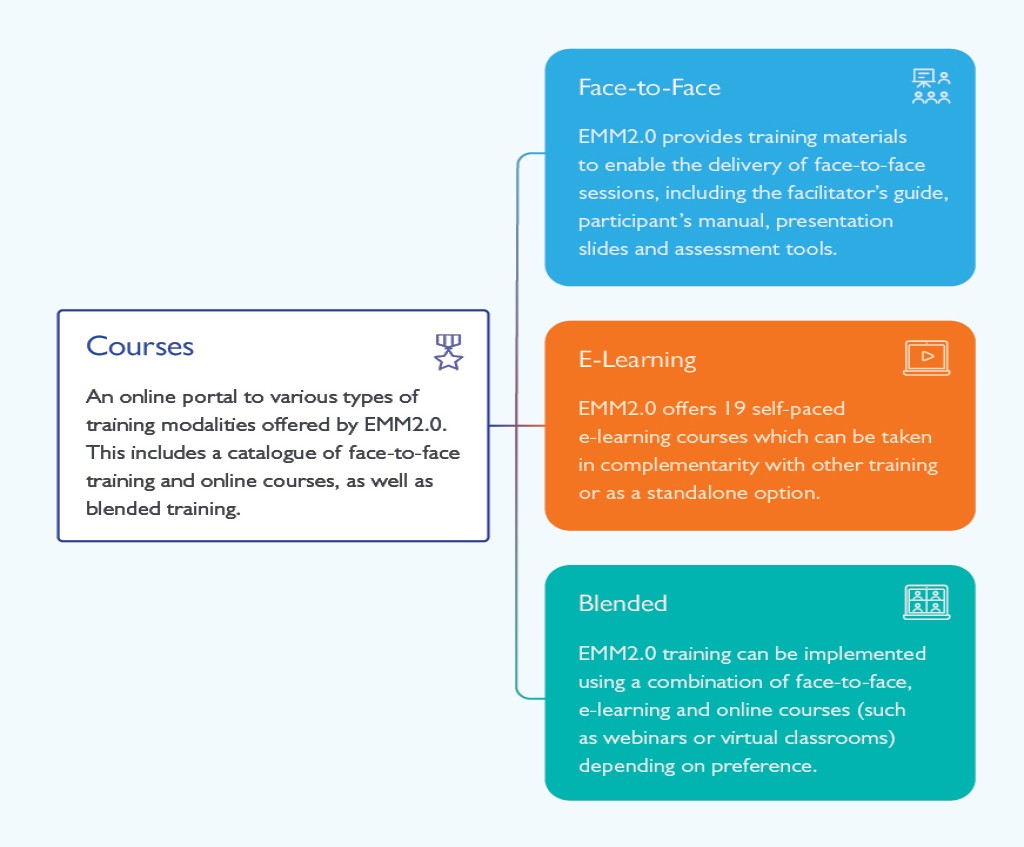About the EMM2.0 Programme
The Essentials of Migration Management (EMM2.0) is IOM’s flagship programme on migration management which provides online resources and foundational training to government officials and all stakeholders dealing with migration.
The programme highlights the interaction between different thematic areas and builds a common understanding of migration with a whole-of-government approach. It also leverages cooperation at national, regional and global levels, while articulating the relevance of international frameworks, such as the 2030 Agenda and the Global Compact on Migration, on the day-to-day work of government officials and other stakeholders involved.
PROGRAMME FEATURES:
- The Handbook: Online chapters covering brief yet comprehensive overviews of foundational and thematic areas of migration management.
- The e-library: Repository of resources, including key IOM and UN documents on migration management and an interactive presentation of the IOM Glossary.
- The Courses: An online portal to various types of training modalities offered by EMM2.0. This includes a catalogue of e-learnings; face-to-face training and blended training.
